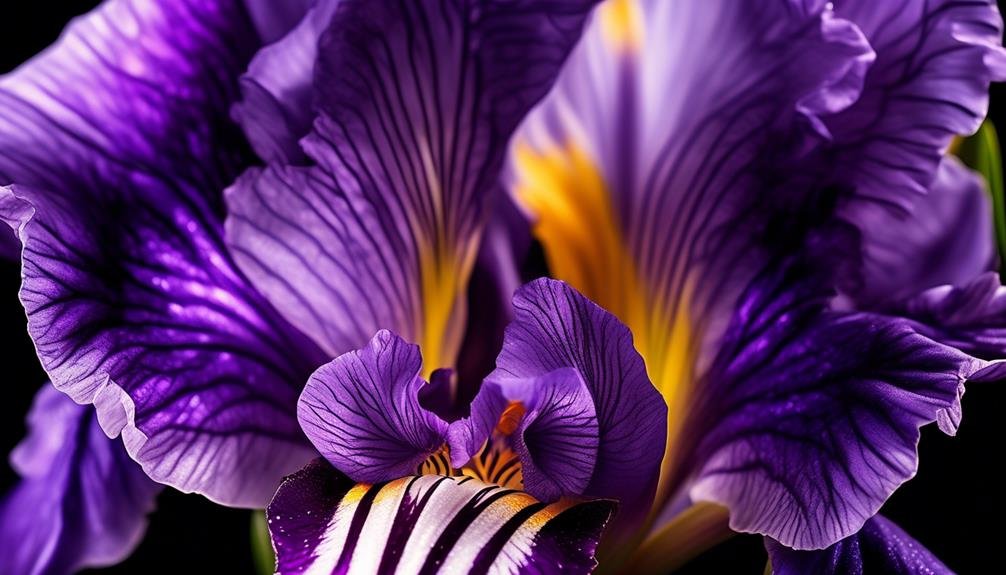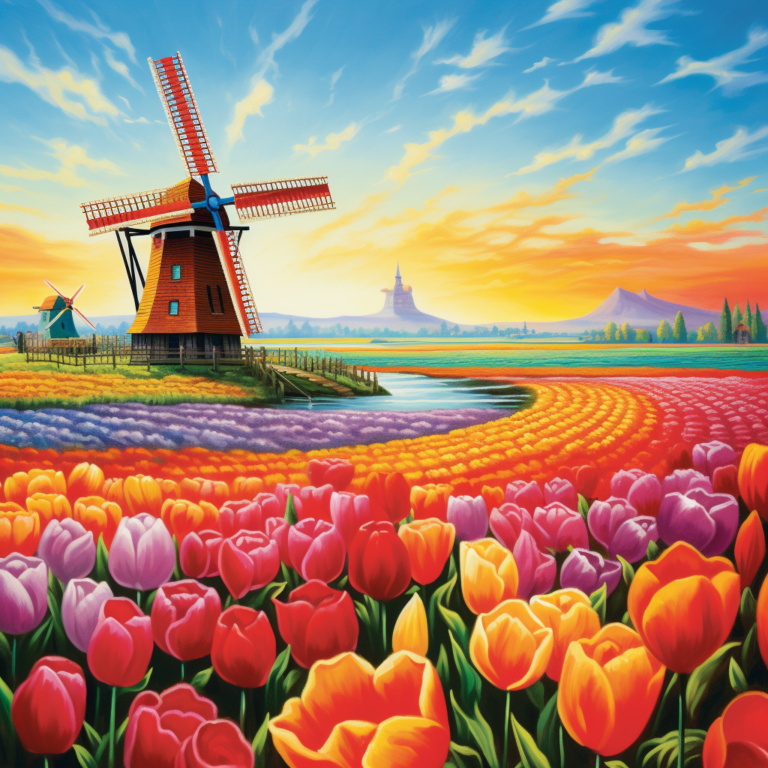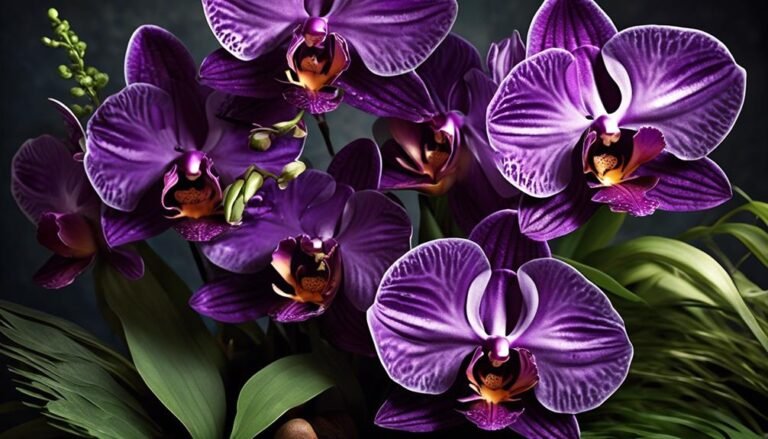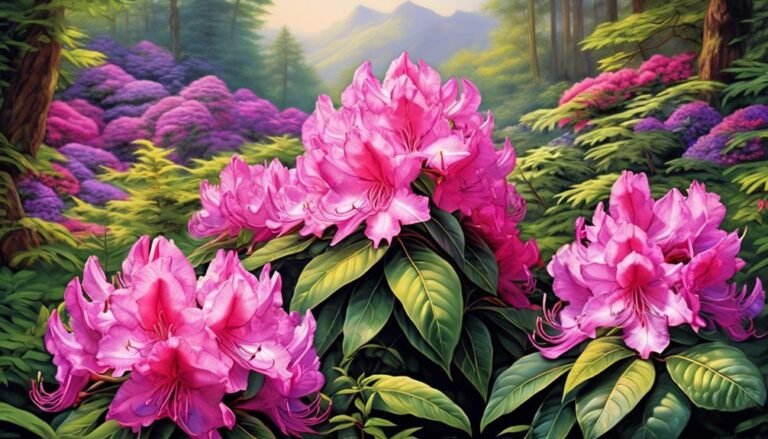Popular Types of Florist Flowers – Iris
The iris, a genus of showy flowering plants, is named after the Greek goddess of the rainbow. Its intricate structure and wide array of colors make it a fascinating subject for botanists and flower enthusiasts.
With its unique charm and characteristics, the iris holds a special place in the floral world, adding sophistication to any setting. The iris comes in various types, each with its own distinct appeal, making it a popular choice for stunning floral arrangements.
Scientific Name
The Iris flower, scientifically known as Iris, gets its name from the Greek word for rainbow, reflecting the diverse range of its flower colors. In ancient Greece, the iris was associated with power and majesty and was linked to the Greek goddess Iris, who was the messenger of the gods, symbolizing communication and eloquence.
The iris has a rich history and symbolism in various cultures. In ancient Egypt, it was connected to the goddess Isis, symbolizing faith, wisdom, and valor. In Japan, the iris represents courage and resilience, often used in boys' festival decorations.
The scientific names of different iris species, such as Iris germanica and Iris hollandica, reflect their origins and characteristics, providing insights into their unique traits and associations.
The intricate symbolism and historical significance of the iris make it a captivating subject of study and appreciation.
Background History
The Iris flower has a rich history and deep symbolism in cultures around the world.
In Greek mythology, the Iris was a messenger goddess, symbolizing faith, valor, and wisdom with its three-petaled form.
The ancient Egyptians also revered the Iris, associating it with their falcon-headed god Horus. This regal flower has been associated with royalty and depicted in Egyptian art and architecture.
In Japan, the Iris represents protection and good health, and it's used in traditional events such as Boys' Day.
Additionally, the Iris holds symbolic significance in Christianity and other faiths, representing purity, hope, and new beginnings.
The diverse symbolism of irises reflects their enduring presence in various cultural traditions.
Physical Description

Irises are known for their slender, sword-shaped leaves and stunning, visually captivating flowers. The flowers have three upright petals called standards, and three drooping petals known as falls, and they come in a variety of colors such as purple, blue, white, and yellow, each with its unique charm. The intricate patterns and vibrant hues of irises make them visually captivating and sought after for various ornamental purposes.
In Greek mythology, Iris, the messenger of the gods, traveled on rainbows, linking the heavens to the earth. This association with the rainbow led to the naming of the iris flower. Additionally, irises are associated with wisdom, courage, and admiration, making them popular in bouquets and floral arrangements to convey heartfelt sentiments.
Irises have been featured in art, literature, and heraldry. Vincent van Gogh's famous painting, 'Irises,' showcases the beauty of these flowers, while Japanese and Chinese cultures have also embraced irises in their art and poetry. Moreover, the fleur-de-lis, a stylized iris symbol, has been used historically as a decorative element, especially in European heraldry.
The physical description of irises, coupled with their symbolic significance and cultural references, contributes to their enduring popularity and timeless appeal in the world of floristry and horticulture.
Colours and Characteristics
Irises are renowned for their vibrant colors and rich symbolism, making them a popular choice for various occasions. The purple iris, historically associated with royalty, symbolizes wisdom, dignity, and respect, making it a fitting choice for honoring esteemed individuals and celebrating achievements. On the other hand, the blue iris represents faith, hope, and new beginnings, conveying encouragement and optimism during challenging times. White irises signify purity and compassion, often used in weddings and expressions of sympathy.
Yellow irises symbolize passion, friendship, and bonding, making them an ideal choice for expressing care to a romantic partner or strengthening relationships with loyal friends. Their bright and cheerful presence enhances arrangements for joyful occasions.
Irises vary in meaning depending on their variety and color, and their adaptability and resilience make them versatile in various floral designs, from formal events to casual gatherings. Their symbolism and versatility make them a cherished choice for a wide range of occasions, offering a thoughtful and meaningful way to convey sentiments and honor significant milestones.
Varieties Available
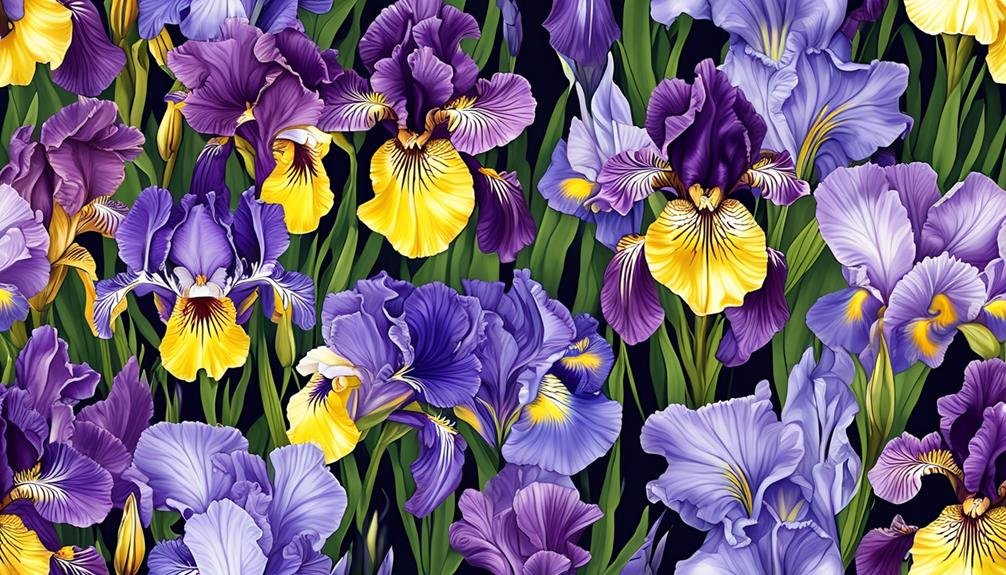
Iris flowers come in a wide variety of colors and characteristics, catering to diverse preferences and occasions. Popular varieties include Bearded Iris, Siberian Iris, Japanese Iris, and Dutch Iris.
Bearded Iris is known for its velvety falls and colorful beards, while Siberian Iris displays elegant, delicate blooms. Japanese Iris has large, showy flowers and thrives in moist soil, making it a favorite for water gardens. Dutch Iris, with its tall stems and vibrant, jewel-toned flowers, adds sophistication to floral arrangements.
Each variety of iris holds cultural significance and symbolism. For example, purple iris symbolizes wisdom and compliments, making it an ideal choice for gifts to express admiration and encouragement. Blue irises represent faith and hope, often associated with peace and tranquility, suitable for occasions where a sense of calm and trust is desired. White irises symbolize purity and renewal, making them fitting for weddings and new beginnings. Yellow irises convey joy and friendship, making them perfect for celebrating achievements or expressing happiness.
Understanding the symbolism and cultural significance of each variety enables you to select the most appropriate iris for a specific occasion, ensuring that your floral arrangements or gifts convey the intended sentiment.
Seasonal Availability
Iris flowers offer a diverse selection throughout the year, catering to different preferences and occasions. Understanding their seasonal availability is essential for both florists and flower enthusiasts. Here's what you need to know:
- *Bearded Irises:* Available in spring, with some varieties blooming earlier in late winter.
- *Siberian Irises:* Bloom in late spring to early summer, offering a mid-year option.
- *Japanese Irises:* Generally available in mid-summer, adding elegance to summer displays.
Cultivation techniques can extend blooming periods, and careful management of watering, sunlight, and soil conditions can manipulate blooming times.
The blue iris symbolizes hope and faith, making it a meaningful choice for springtime celebrations.
Understanding the seasonal availability of iris flowers allows for better planning and utilization throughout the year, enhancing the appreciation of these elegant blooms.
Care Tips

Iris Care Tips: How to Ensure Healthy Growth of Iris Flowers
Planting: Plant iris bulbs with the pointed end facing up in well-drained soil and full sun to promote optimal growth.
Watering: Regular watering is crucial for healthy iris growth, as they require well-drained soil to thrive.
Fertilization: Regular fertilization during the growing season benefits iris plants, promoting strong and vibrant blooms.
Maintenance: Division of rhizomes every few years is essential for maintaining the vigor of iris plants.
Additional Tips: Mulching around iris plants helps conserve moisture and suppress weeds, promoting a healthy growing environment.
Common Problems: Overwatering can lead to rot, while underwatering can result in stunted growth. Inadequate sunlight can also cause poor flowering.
What Are the Best Ways to Care for Iris and Violet Flowers as a Florist?
As a florist, caring for types of florist flowers like iris and violet involves providing ample sunlight, watering consistently, and fertilizing regularly. Trimming spent blooms and checking for pests are crucial. Keeping the flowers in a cool environment and changing the water every few days can also extend their vase life.
Conclusion
Iris flowers are a popular choice for florists due to their vibrant colors and unique petal formations. They come in several varieties, each with its own characteristics and growing requirements, offering a wide range of options for floral arrangements and decorative use.
Their seasonal availability from late winter to early spring adds a pop of color to gardens and symbolizes the start of warmer weather, making them a beloved choice for both gardeners and florists alike.
The iris flowers' vibrant colors and unique petal formations make them a versatile choice for floral arrangements and decorative use. With several varieties available, each with its own characteristics and growing requirements, iris flowers offer a wide range of options for both gardeners and florists.
Their seasonal availability from late winter to early spring adds a pop of color to gardens and symbolizes the start of warmer weather, making them a beloved choice for both gardeners and florists alike.
